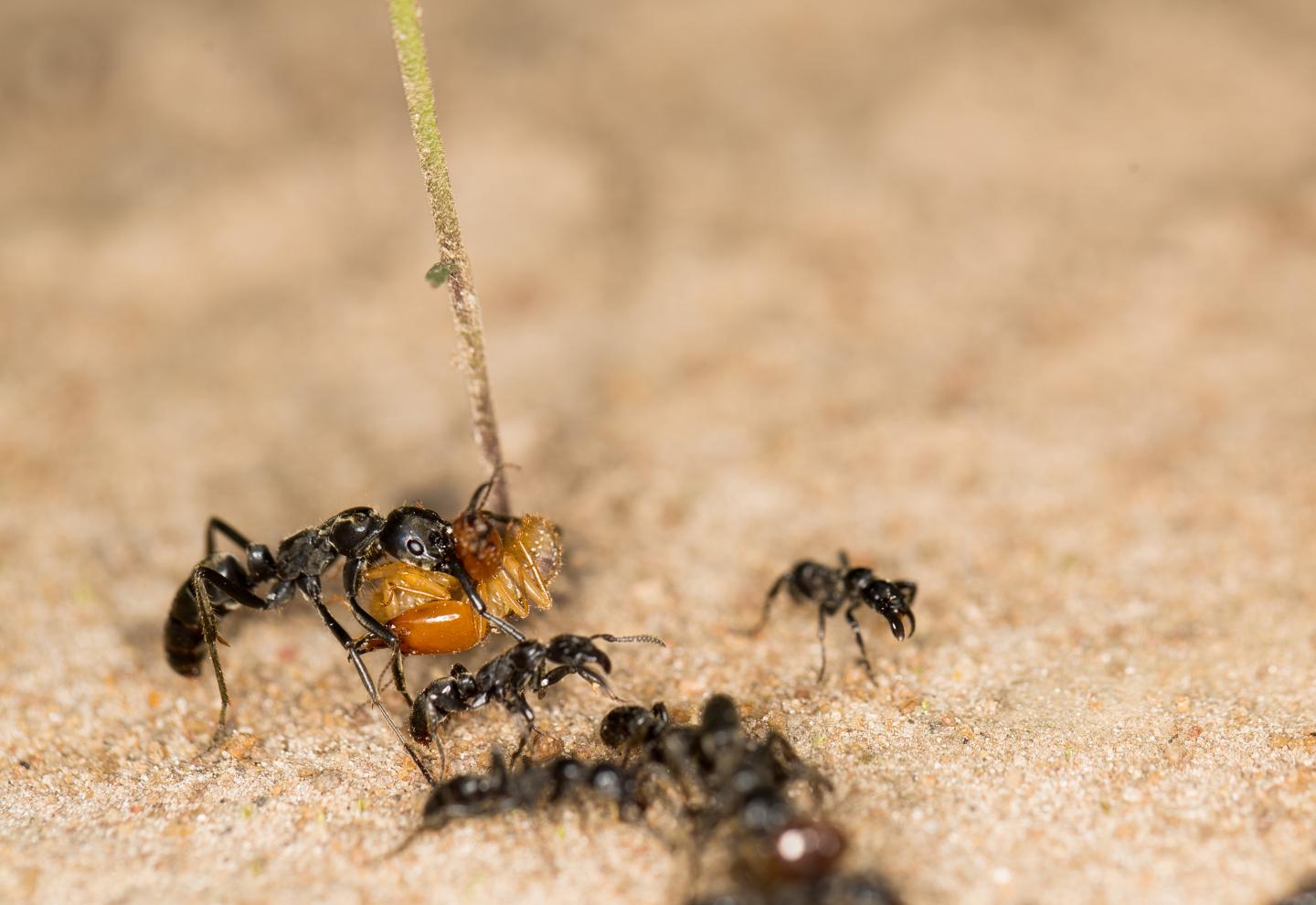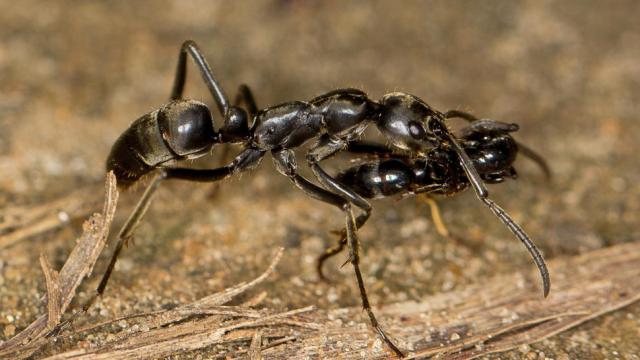In a behaviour never seen before in an insect species, predatory ants were observed to retrieve wounded comrades on the battlefield and then bring them back to the nest for recovery. Sounds noble, but these ants — who spend their days attacking termites — are simply being pragmatic.
The sub-Saharan Matabele ants are specialised termite predators. Anywhere from two to four times each day, around 200 to 500 soldiers of this species align themselves in long columns and march toward termite foraging sites. During these unprovoked attacks, large ants (called majors) break open the nest, and smaller ants (dubbed minors) rush in to kill the termite workers. The ants then haul their dead prey back to their nest.
But the termites aren’t completely helpless. Over the millennia, termites have evolved a number of ways to fight back, including powerful jaws and the formation of a social caste dedicated to fighting off the predatory Matabele ants. Consequently, the soldier ants can expect a good fight, and when battle ensues, injuries are common.

Matabele ants returning from a successful raid. The big ant carries two termite soldiers in its mouth as prey. (Image: Erik Frank)
As a new study published in Science Advances shows, this “arms race” between the ants and termites has now taken an unexpected turn. During a recent field expedition to Comoe National Park in Ivory Coast, a research team from the University of Würzburg in Germany documented a countermeasure never seen before in an insect species — rescuing behaviour. As the authors write in their new study:
We show that a unique rescue behaviour in [Matabele ants], consisting of injured nestmates being carried back to the nest, reduces combat mortality. After a fight, injured ants are carried back by their nestmates; these ants have usually lost an extremity or have termites clinging to them and are able to recover within the nest.
After studying the ants in more detail, the researchers learned that wounded or distressed ants cry out for help by discharging two chemical signals, dimethyl disulfide and dimethyl trisulfide, which are secreted through glands in the mandibles. Ant behaviour is very much influenced by chemicals, and these signals compel a nearby soldier to grab its distressed nestmate and bring it back home. Ants with injured or missing body parts use this time to recover, although they don’t regrow any missing limbs. The badass little amputees just rest up before going back to battle. In some cases, the “treatment” at the home involves the removal of termites still clinging to the ant.
As the new study shows, injured ants that managed to return back to the nest without any help died about 32 per cent of the time. But in cases where the ants were rescued, about 95 per cent were able to recover and then participate in subsequent raids — sometimes less than an hour after incurring an injury. The researchers estimate that this rescue behaviour results in a colony size that’s about 29 per cent larger than it would be otherwise.
It’s an unexpected finding, but it makes sense. The ants aren’t acting out of any kind of compassion. It’s pure calculus — one enforced by the brutal demands of evolution. The resources, time, and energy spent on these rescue attempts are clearly worth it, helping the ants to maintain the size and strength of the colony as a whole. If this wasn’t the case, then this behaviour is unlikely to have emerged.
A fascinating takeaway of this study is the potential connection to humans and our pro-social behaviours that, on the surface, seem to violate the so-called selfish gene assumption (i.e. the idea that genes only care about individuals and not the group as a whole). Ultimately, our triggers for saving our comrades may be different (i.e. we actually feel empathy and compassion, unlike the ants who are driven by chemical signals), but the motivation is the same: preserving the integrity of the individual to ensure the survival of the group as a whole.
